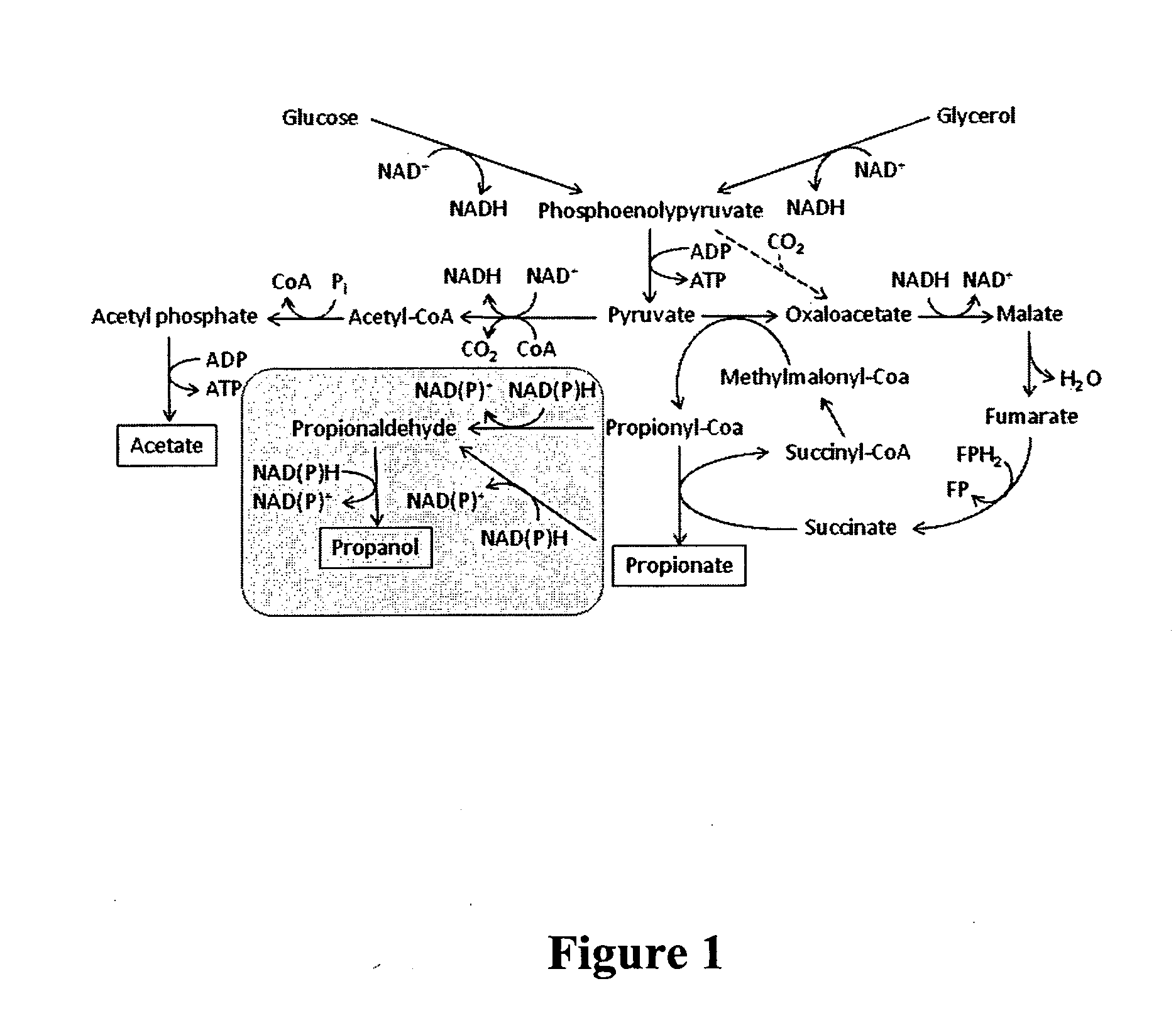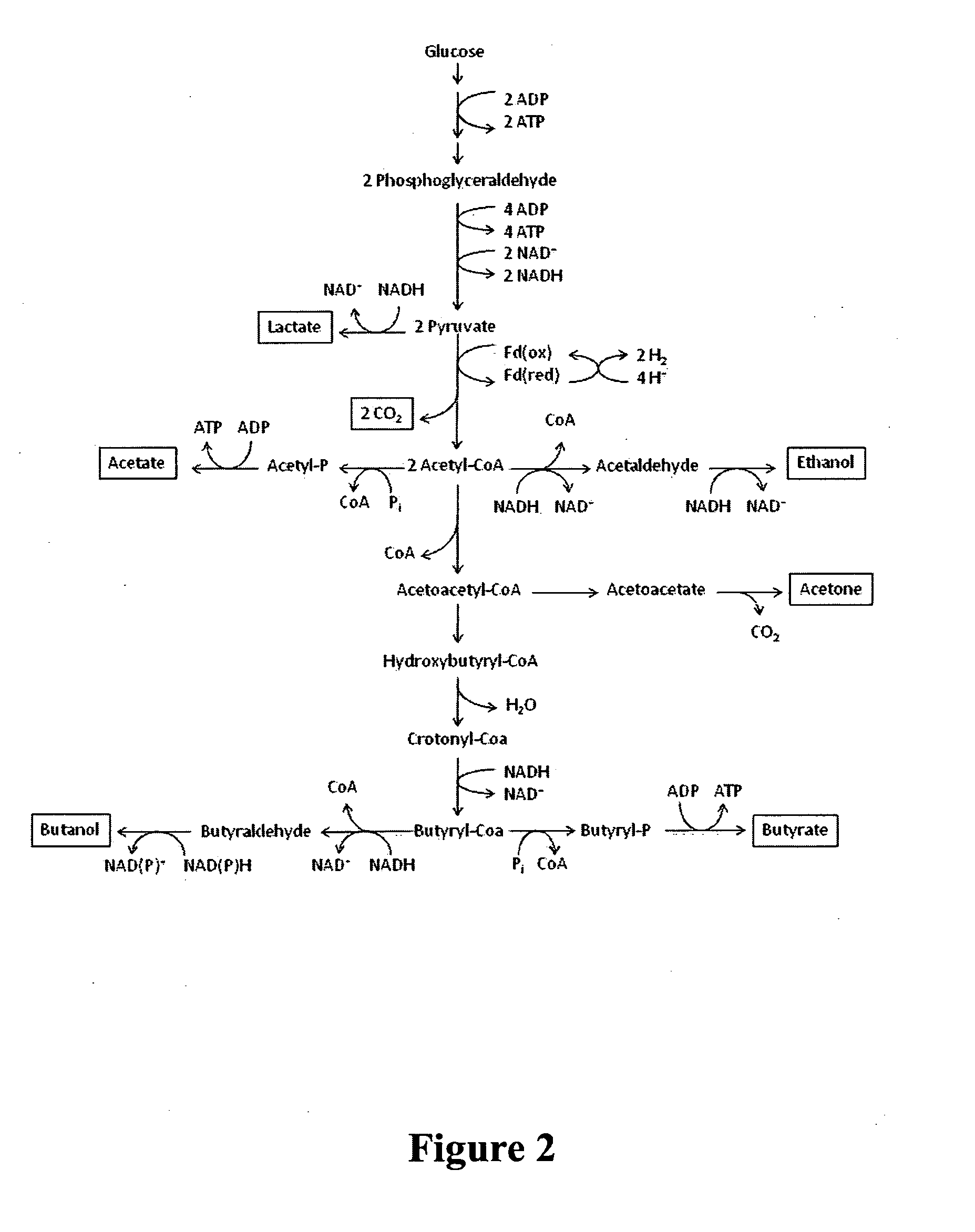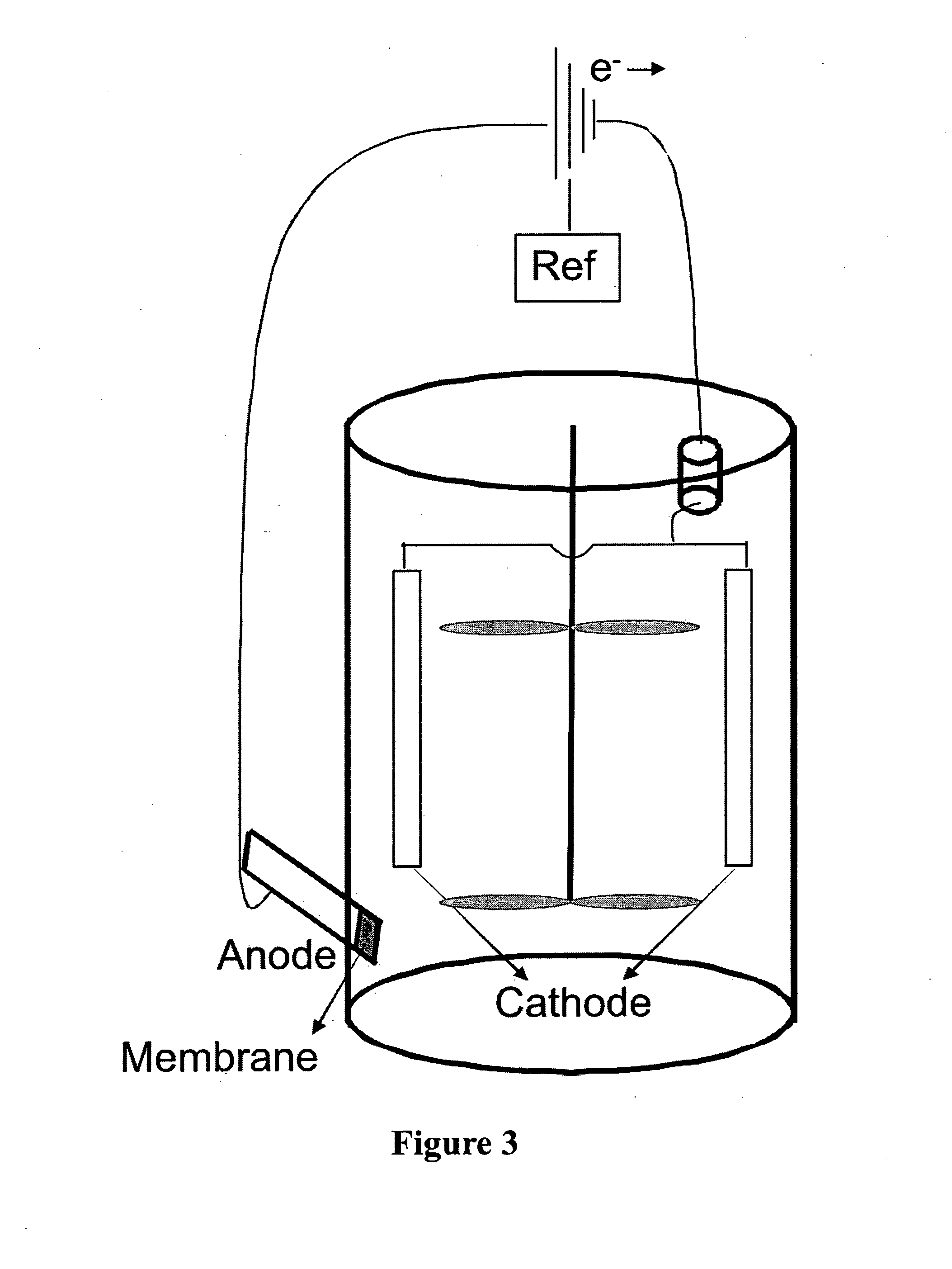Engineered microorganisms and integrated process for producing n-propanol, propylene and polypropylene
a technology of n-propanol and polypropylene, which is applied in the field of engineered microorganisms and integrated process for producing n-propanol, propylene and polypropylene, can solve the problems of still no teaching in the prior, and achieve the effect of low production cost and high yield
- Summary
- Abstract
- Description
- Claims
- Application Information
AI Technical Summary
Benefits of technology
Problems solved by technology
Method used
Image
Examples
example 1
Fermentation of Sugarcane Juice by Propionibacterium Acidipropionici
[0151]A native strain of Propionibacterium acidipropionici (ATCC No. 4875) was used to study propionic acid and n-propanol production using sugarcane juice as a carbon source. The bacterium was cultured in a medium containing 30% sugar cane juice diluted in water and supplemented with 1 g / L of yeast extract. At this dilution, the starting concentrations of sugars in diluted sugarcane juice medium were measured at 53 g / L of sucrose, 10.9 g / L of glucose and 7.4 g / L of fructose. The medium was sterilized at 121° C. and 1 kgf / cm2 for 20 min prior to use.
[0152]Free-cell batch fermentation was conducted in a 2.5 L bioreactor (BioFlo 3000-New Brunswick) containing 2.0 L of the sterile medium inoculated with 20 g / l (wet weight) of the adapted cells of P. acidipropionici. The bioreactor temperature was maintained at 30° C. and the agitation speed at 100 rpm. Constant pH of 6.5 was automatically controlled by adding a 4M NaO...
example 2
Engineering Propionibacterium Acidipropionici for In Vivo N-Propanol Production Through the Heterologous Expression of a Propionyl-CoA Reducing Pathway
Constructs:
[0154]pBK1T. A shuttle plasmid, pBK1T, is constructed in two steps. First step consists of fusing a portion of the native pRGO1 plasmid of P. acidipropionici with a portion of a commercial pUC18 plasmid, as described by Kiatpapan et al. 2000 (Appl. Env. Microbiol. 66:4688-4695). As a result of this fusion, the plasmid has both origins of replication in E. coli and P. acidipropionici and the marker gene conferring resistance to ampicilin for E. coli; however, this resistance gene is not expressed in P. acidipropionici due to the differences in G+C content and codon usage. As an appropriate selection marker for P. acidipropionici, a synthetic construct was designed comprising a gene conferring resistance to the antibiotic thiostrepton, isolated from Streptomyces laurentii (GenBank Accession Number L39157.1) (SEQ ID NO.: 144),...
example 3
Fermentation of Sucrose by Propionibacterium Acidipropionici Using a Bioelectrical Reactor and a Mediator Molecule
[0159]A native strain of Propionibacterium acidipropionici (ATCC No. 4875) was used to study n-propanol production using sucrose as a carbon source. The bioelectrical reactor and different concentrations of mediator (cobalt sepulchrate) were utilized to drive the redox balance in order to obtain n-propanol.
[0160]P. acidipropionici was grown in a synthetic medium containing (per liter): 1 g KH2PO4, 2 g (NH4)2HPO4, 5 mg FeSO4.7H2O, 10 mg MgSO4.7H2O, 2.5 mg MnSO4.H2O, 10 mg CaCl2.6H2O, 10 mg CoCl2.6H2O, 10 g yeast extract (Oxoid), and the 9 g sucrose as a carbon source. The medium was autoclaved at 121° C. and 15 psig for 20 min. The cobalt sepulchrate (mediator) was added separately to the autoclaved media in order to avoid thermal molecular instability.
[0161]Batch fermentation in a bioelectrical reactor was performed in a 2.0 L fermentor APPLIKON containing 700 ml of cult...
PUM
| Property | Measurement | Unit |
|---|---|---|
| e-value threshold | aaaaa | aaaaa |
| octane number | aaaaa | aaaaa |
| durable | aaaaa | aaaaa |
Abstract
Description
Claims
Application Information
 Login to View More
Login to View More - R&D
- Intellectual Property
- Life Sciences
- Materials
- Tech Scout
- Unparalleled Data Quality
- Higher Quality Content
- 60% Fewer Hallucinations
Browse by: Latest US Patents, China's latest patents, Technical Efficacy Thesaurus, Application Domain, Technology Topic, Popular Technical Reports.
© 2025 PatSnap. All rights reserved.Legal|Privacy policy|Modern Slavery Act Transparency Statement|Sitemap|About US| Contact US: help@patsnap.com



